3 styles of sweet rosé that prove that pink doesn't have to mean dry
Thinking (not) of Valentine’s Day and how everything mid February seems to be pink, sweet or bubbly we are looking at pinkish (in its widest possible sense) sweet wines. These are great wines as we move out of the season of heavier reds into spring and summer, and, as we discovered, make for wonderful gastronomic pairings as well as long cold drinks. As beautiful in the glass as all other rosé wines, these wines range from the palest of pinks to ruby, amber and gold.
Sweet pink wines find themselves today at the intersection between a trendy, booming sector of the wine market, and another sector that has been declining in popularity for a very long time now. Will sweet wine’s rosé-ification save sweet wines?
Sweet pink covers a vast range of styles, but we have focused on three very different types of pink sweet: the pink version of Port, fortified Grenache VDN from Rasteau and pink Muscat de Beaumes de Venise. When we started writing this, we set out to include a few other sweet pinks - but in the end decided that fortified rosé deserves an article on its own!
The trendiest place to be in the sweet pink world is undoubtedly the Douro, where Pink Port has been capturing bartenders’ imaginations since Croft’s pioneering 2008 release.
Within the rosé Port world there are two key categories. The millennial-focussed sweet ‘pink port’ cocktail ingredients, and the darker, more serious ‘rosé port’ fortified wines. We had thought the wines might give a clue with their terminology on the label - but sadly this was not the case, as with Syrah and Shiraz. The dark ruby reds tended to be fruitier, fresher, more simple sweet styles, while the more tawny salmon and pale red wines were more complex styles.
‘Pink’ ports tend to be destined for the export market, whilst the pale red ‘rosés’ rarely leave Portugal. The locals seem to know a thing or two - these wines are darker, more structural, and gently tannic, a pattern we have seen reflected in dry rosés where the darker styles seem to remain in Iberia and the pale, more international styles are exported.
The fresh fruity pink ports tend to have more primary red fruit: cherries and strawberries, and were good chilled while some, if too warm, take on herbal medicinal flavours. However, while a large ice cube, which melts more slowly, with a zest of orange peel and rosemary garnish or the addition of tonic was was good, over diluting with ice and soda seemed to wipe out all the fruity charm. Maybe we have yet to find the perfect cocktail recipe - but happy to keep trying! Quevedo’s comment "If you are not too conservative about Port you may really like it." is telling - there will be purists out there who may be horrified by the thought of pink port but innovative marketing is reaching out to a new and more youthful market.
Some of these wines were tasted with Master of Port Julia Scavo.
Of the three main styles of fortified rosés, port has the highest alcohol, ranging from 18% to 19.5%. Pink port is fortified earlier in the fermentation process than French Vin Doux Naturels, and with more mutage spirit, albeit usually at the lower concentration of only 70% abv. Grapes include variations of Tinta Cão, Tinta Roriz, Touriga Franca, Touriga Nacional, Tinta Barroca and Mourisco. Because of the earlier fortification, these wines have more primary red fruit aromas, and less of the well-developed secondary aromas of the others. Unlike red and white port, these are rarely oaked, again helping to emphasise the primary fruit aromas. We tried all the wines in a variety of glasses, but settled in the end for Rona's Orange wine glass, which was especially useful in balancing primary fruit aromas with the more oxidative notes.
David Guimaraens, who created Croft's original pink port, was responding to the need to offer a much lighter, fruitier style for summer drinking, and its creamy almost floral cherry fruit and silky sweetness, delivers a classic and attractive wine which can attract a younger market. Its back label gives serving suggestions "It makes a sensational base for original and stylish cocktails. It can also be enjoyed on its own served chilled or over ice, as an elegant and distinctive aperitif. Or try it as a refreshing summer spritzer with soda or tonic water and a zest of lemon." They also make a Pink and Tonic in a can which has a slightly more sweet Negroni style herbal character.
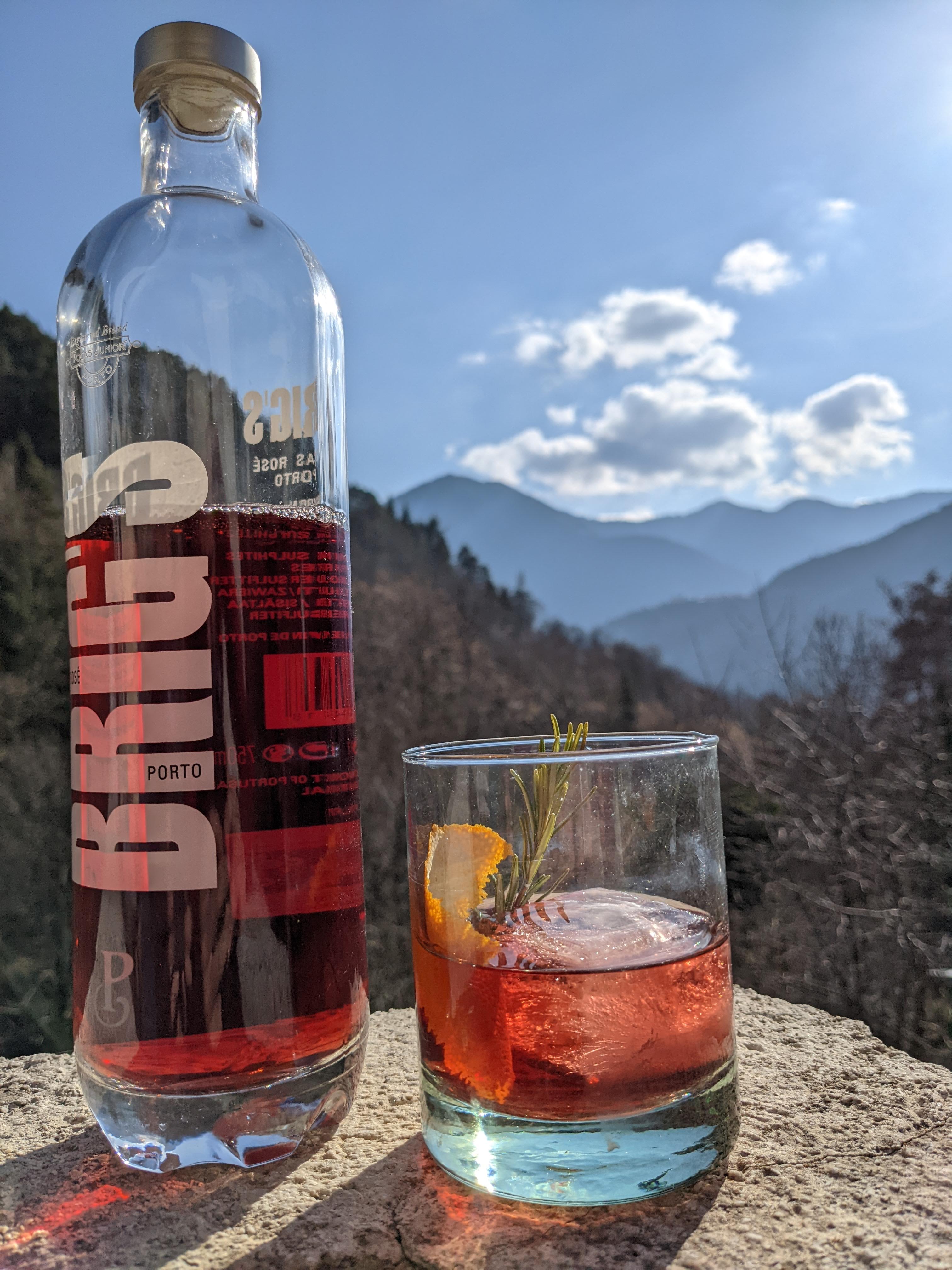
Brig’s Pocas Rosé was similar in style. Easiest and most commercial with its fun bottle shape and screw cap. Interestingly - no serving suggestions on the bottle. A dark ruby pink the cherry and strawberry fruit is rich and full bodied, sweet with soft acidity and rather lovely on ice while Barao de Vilar’s pink port, in a lovely old style squat 50cl bottle with a white stencil label, made by Álvaro van Zeller, was particularly unctuous, with white chocolate richness, raspberry and strawberry fruit with a touch of red wine restraint giving it complexity and seriousness.
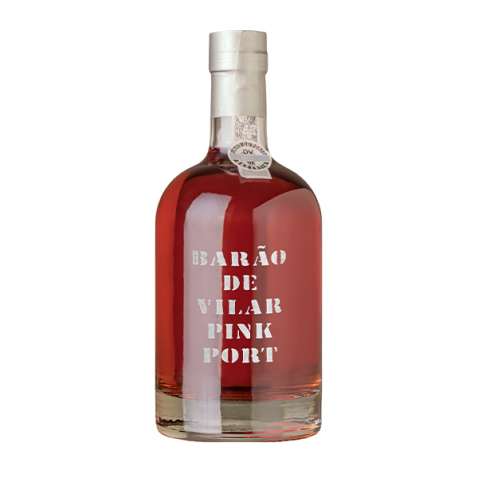
Slightly heavier, with more herbal notes giving a sweet sour combination, these became more herbal, Negroni in character with the addition of tonic. Dalva was a pale red colour with intense cherry aromas, creamy red fruit and herbal notes. Cruz was more ruby pink again with intense cherry and herbal flavours but a little heavier with some balsamic notes. Heritage, the only one in a clear glass 50cl port bottle. We liked the back label (in Portuguese) discussing the history and heritage of port wines. Pale red. Full bodied cherry and strawberry fruit with a touch of herbal undertones and floral notes (a touch of VA in our bottle?) Sweet and fruity. Dow (the only one with a wine cork), was more salmon pink colour, and had a serious, more tannic structure, similar to its red ports.
Our three favourite pink ports, however, are beautiful on their own, and even shine served with food, whether tapas style anchovies and olives or with cheese.
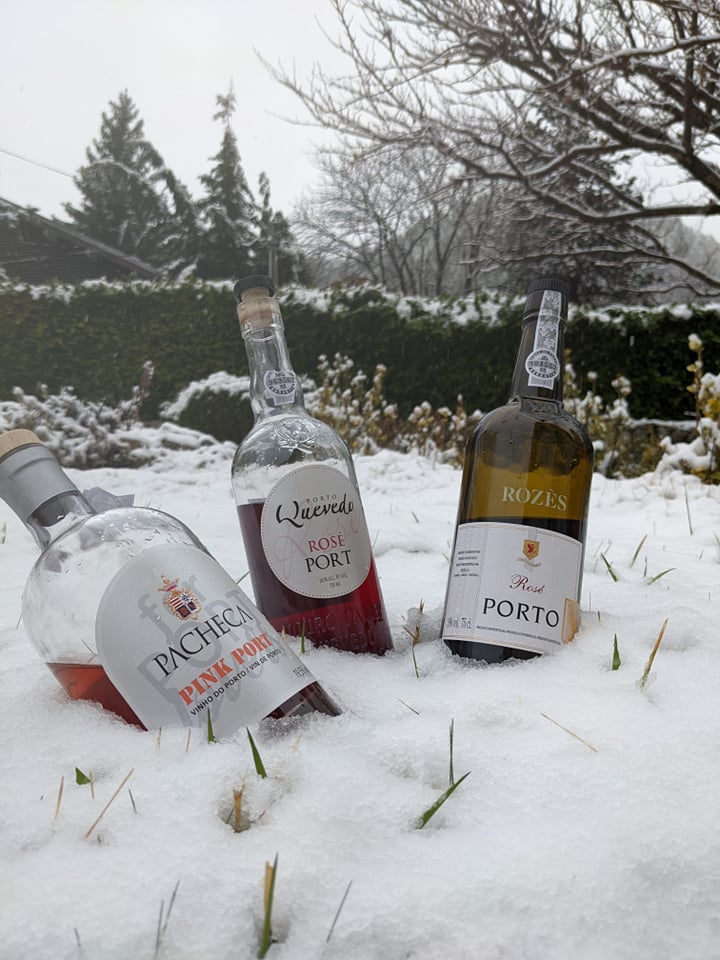
Pacheca
Quevedo
Rozès
The very nature of Port viticulture means that the wines (unless single Quinta) are usually a blend of grapes from different sites along the Douro valley. The larger the port house, the bigger the range of sites. The vineyards lie on the steeply terraced slopes and the soil is largely schist with some granite. Exposure and altitude are important, playing a role in deciding which variety, ripeness and freshness. Quevedo's rosé, for example comes from the Quinta da Trovisca, located in the upper reaches of the Douro valley, where the temperatures are hotter and more continental.
"young vines at an altitude of over 548m; possibility to achieve over ripeness maintaining a good acidity. But the most important reason to choose Trovisca’s grapes was the varietals we decided to use for our rosé Port: Touriga Nacional, Touriga Franca and Sousão. If the first two varietals are consensual due to their flowers and fruity flavours, Sousão is more mineral and well known by its colouring "skills". At the end, in the final blending, We decided to use 30% of Sousão, which could give us a plus of acidity, 40% Touriga Nacional and 30% Touriga Franca."
Moving away from the Douro valley and towards the Rhone brings us to Rasteau, the famous but rare Grenache-based fortified wine, is in fact 60% rosé! Admittedly, even 60% of 20,000 bottles isn’t much... Most of France's fortified wine comes from the Roussillon, where similarly to Port, red dominates - making Rasteau a rosé oddity.
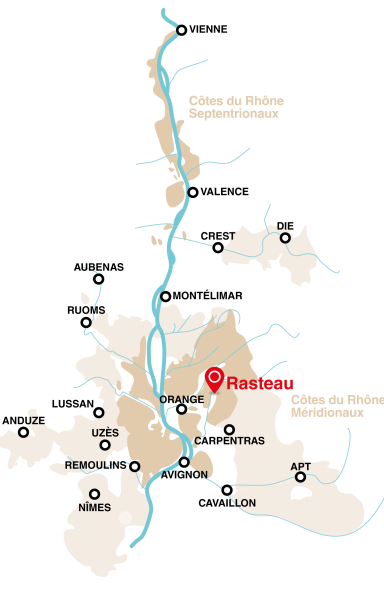
While 17% abv fortified wines might not seem like traditional Provence or South-of-France rosés, these wines are as traditional as they come, are absolutely scrumptious, and are absolutely definitely rosés.
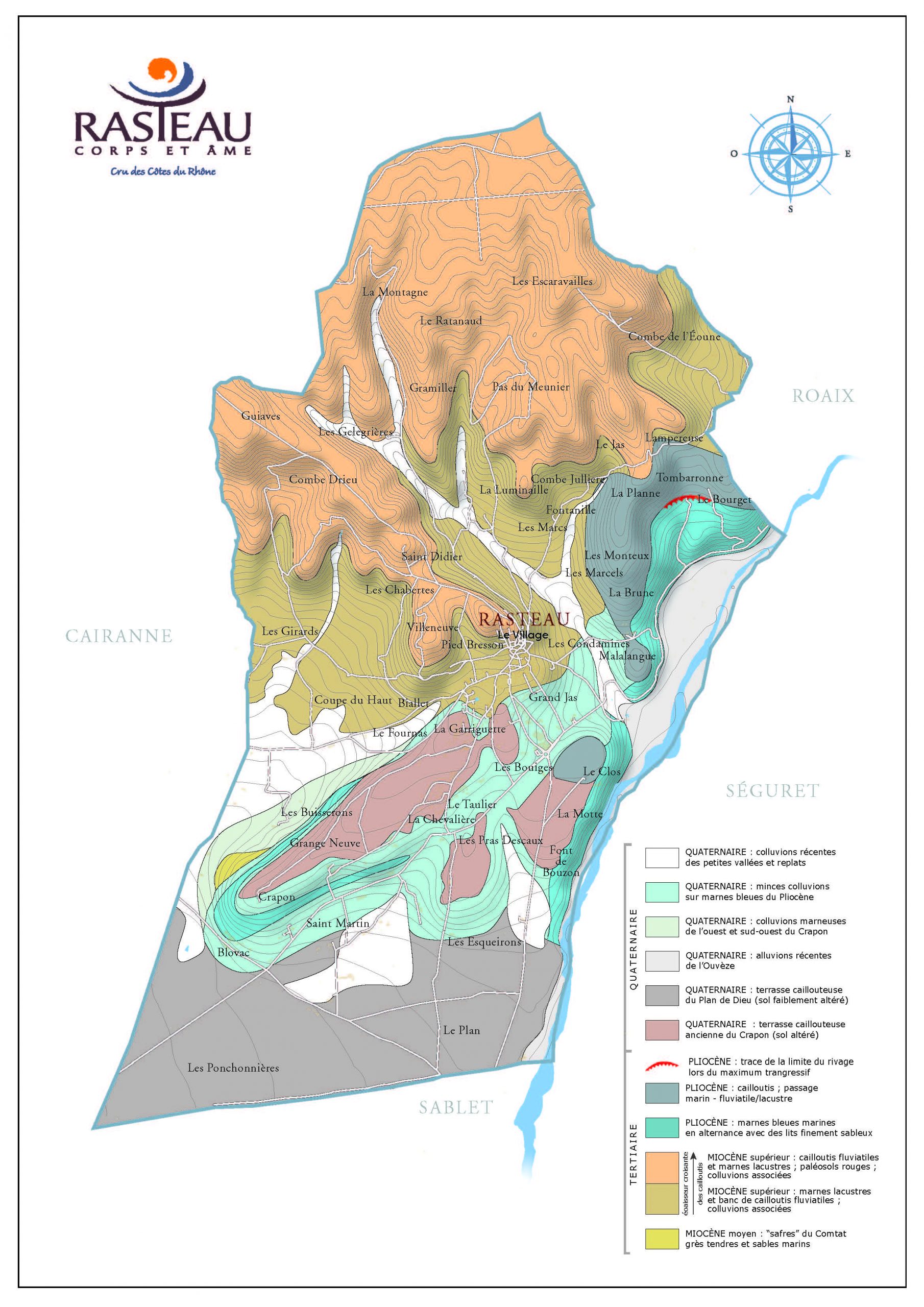
Somewhat similarly to Port, after either a short maceration or direct press, the Grenache Noir is fermented and then fortified with 95% spirit (80% for port, also added in greater quantities earlier in the fermentation process). These wines are almost always aged in oak, typically for at least three years. The oak is old and large, leading to gentle micro-oxidation rather than any new oak flavours. The alcohol must be a minimum 15% and a minimum of 45g/l sugar, making them the driest of all of the wines tasted.
Unfortunately for rosé and dessert wine lovers, the overwhelming majority of Rasteau's production nowadays (98%+) goes to the reds. Rasteau itself is surrounded by the others Crus and Villages of Gigondas, Sablet, Seguret, Roaix, Cairanne and Plan de Dieu - all coming with a solid red wine pedigree - although clearly capable of producing great rosés as well. The Rasteau Vin Doux Naturel AOP does actually extend to include a few of these neighbouring villages, but in practice most in made within Rasteau itself.
Most of these wines (and indeed of Rasteau's quality production) come from the southern slope of the Ventabren ridge, which also protects the area from the Mistral's excesses. The soil in the area is the classic argilo-calcaire.
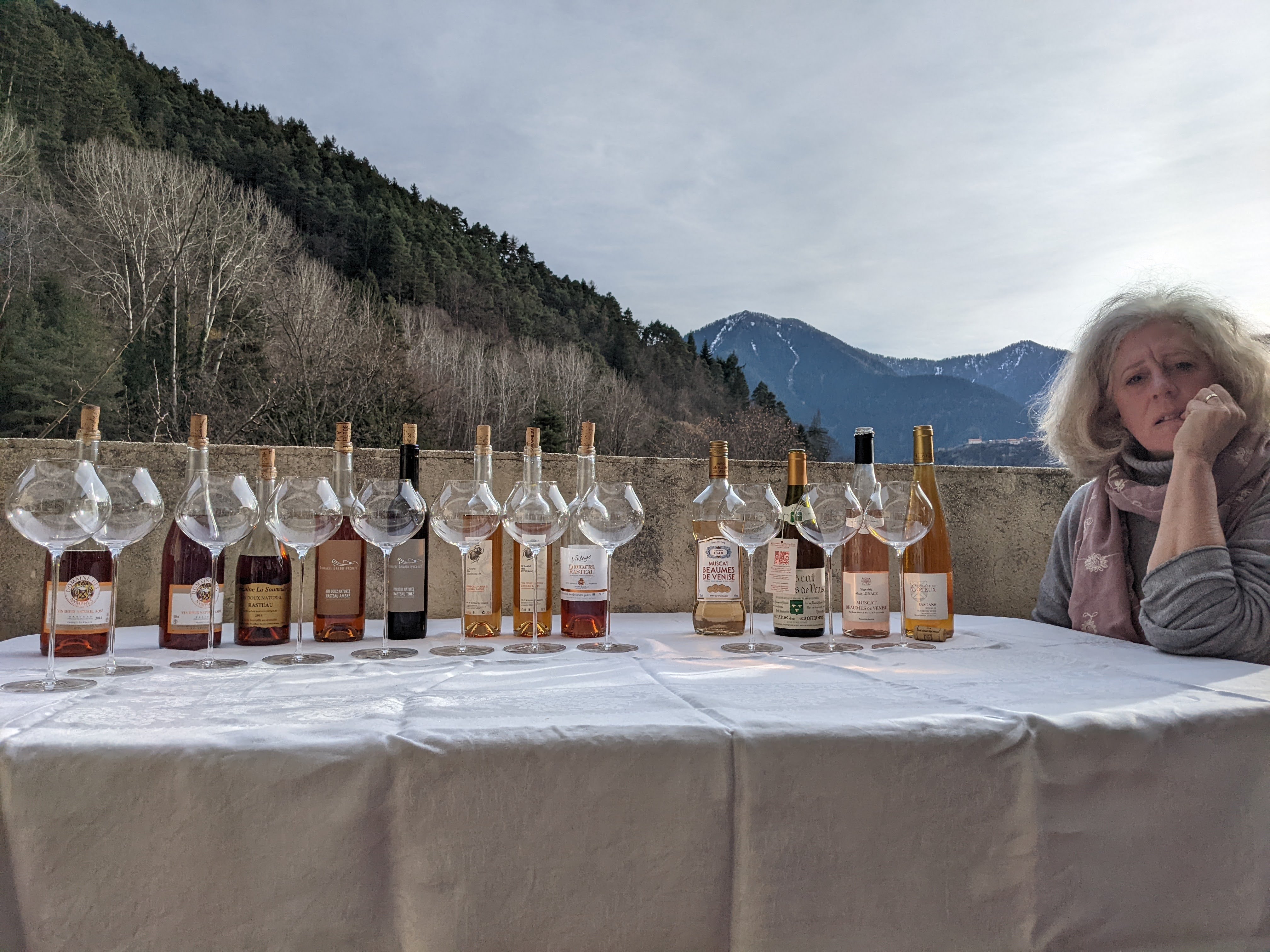
Once again, the terminology can be confusing. A Rasteau rosé can only display ‘rosé’ on the label if it is bottled in the year following the harvest. Following that, it must be bottled as ‘ambré’ - even if it is still technically a rosé by my definition. Bottle-aged rosé (see Domaine des Nymphes) may still be called rosé. The same is true for reds (grenat -> tuilé) and whites (blanc -> ambré). Confusingly, both whites and rosé evolve into ambré giving them all more golden amber colour, and after a couple of years in barrels, look identical - but taste very different. Whites, however, are extremely rare, so most ambré wines are in fact rosés, made using direct press and fermented as a dry rosé until fortification. Almost all of the Rasteau recommend serving with foie gras - we've found them to be a bit more versatile and you can absolutely enjoy these wines without resorting to animal cruelty. Agro-dolce sauces work well, and light salads with a honey dressing really play on the wines' sugar-and-acidity balance.
Domaine Grand Nicolet Ambré
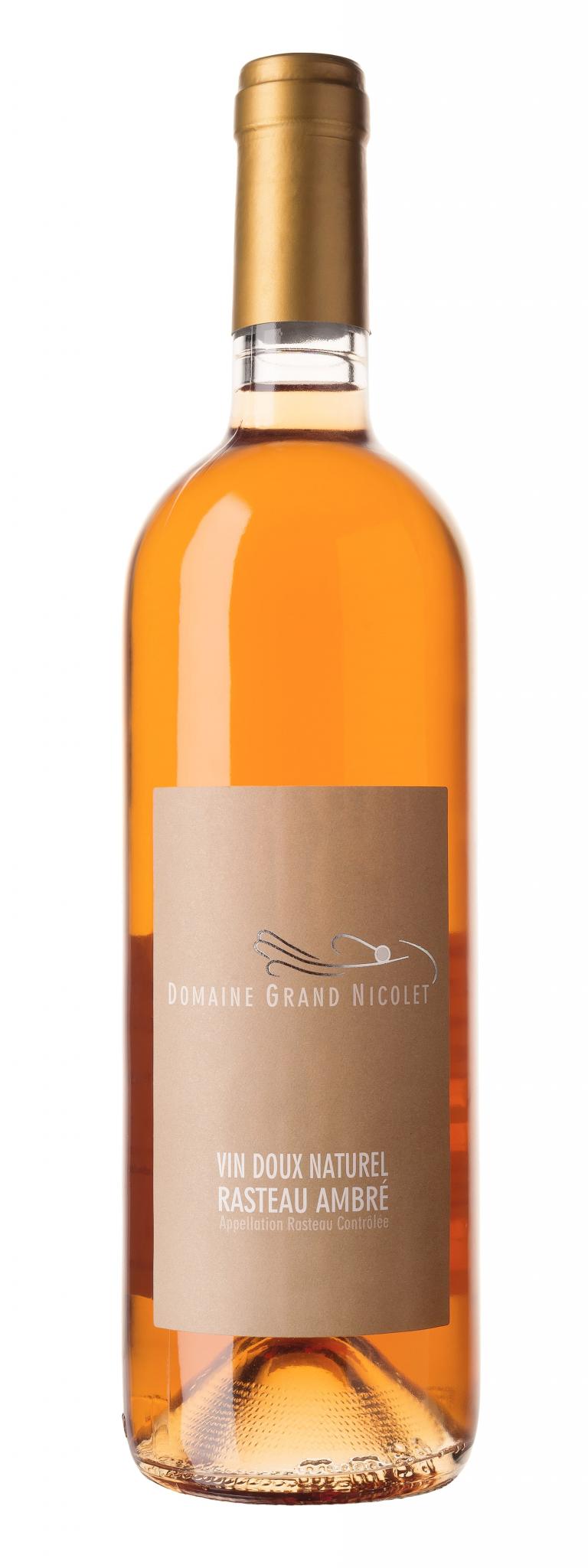
Domaine des Escaravailles TPMG Ambré
Domaine des Escaravailles Ambré

Domaine la Soumade 2014
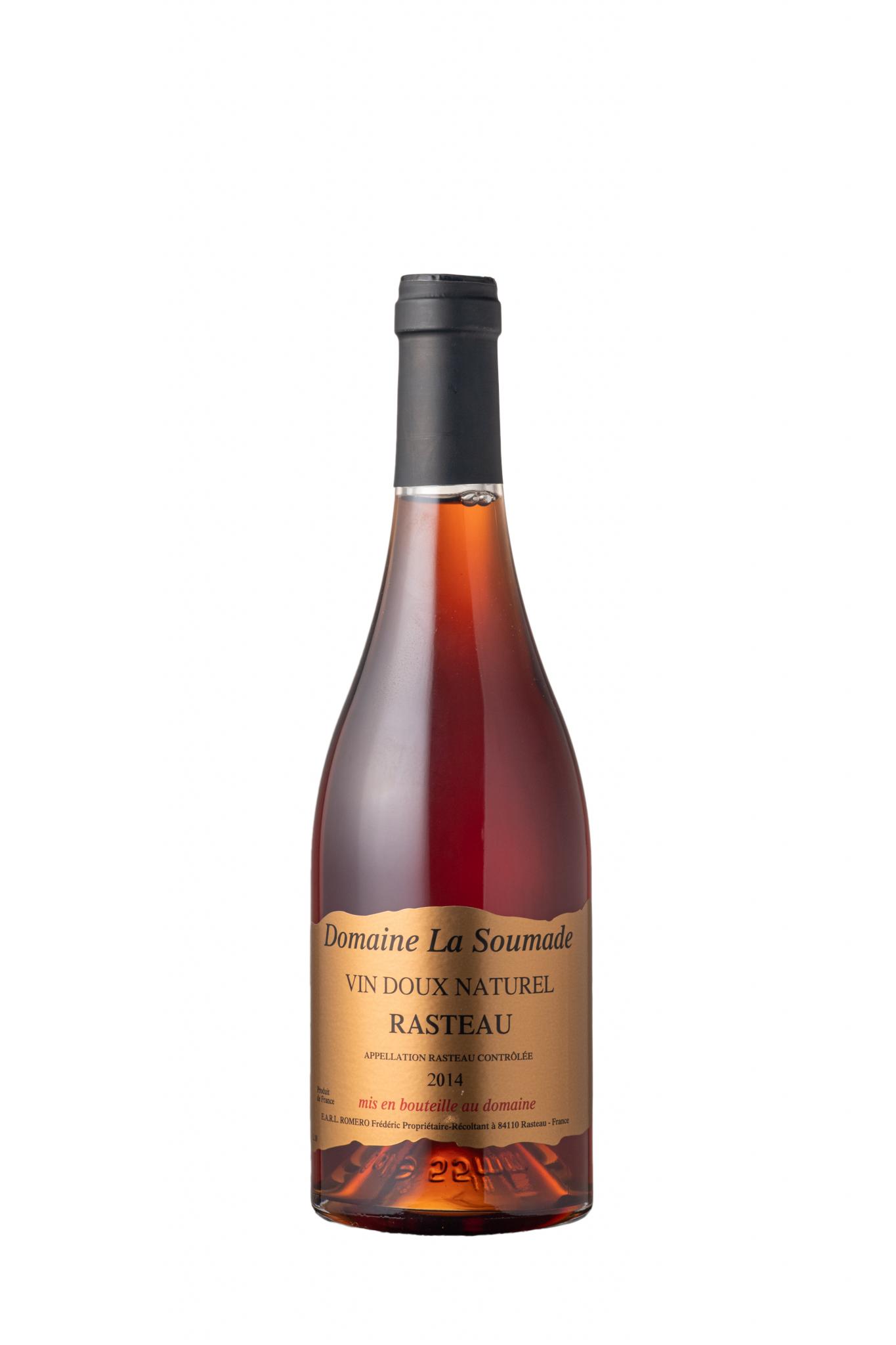
Domaines des Nymphes Ambré
Domaine des Nymphes Rosé 2014
Ortas 2016, Cave de Rasteau, Rhonea
Domaine Grand Nicolet Tuilé 2004
The lowest in alcohol of our trio of fortified pinks, at around 15%, comes Muscat de Beaumes de Venise, also in the southern Rhone, near Rasteau. Beaumes de Venise is a little further South, and nestled into the Dentelles de Montmirail and the Plateau de Courens - see our upcoming guide to The Rosés of Southern France for more detailed maps. It is a more immediate neighbour of Gigondas and Vacqueyras.
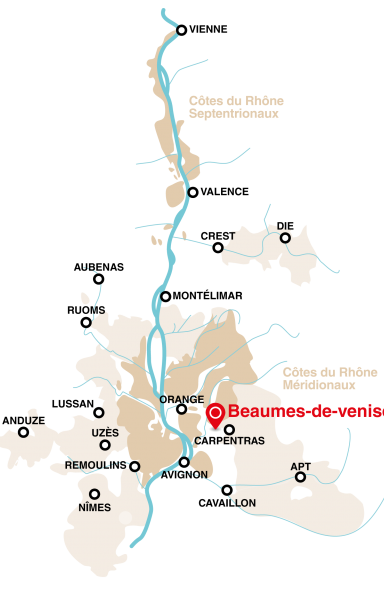
Most people know this wine as being a sweet white wine made with Muscat blanc à petits grains and which must be a minimum of 110g/l residual sugar and a minimum alcohol of 15%. However, mutation of this variety has resulted in Muscat rouge à petits grains growing in the region - and now make up around 4% of plantations. For most producers who have this mutation, any hint of pink is subsumed by the vast majority of white grapes, but a few are allowing the red version to shine, resulting in pink muscat wines. Uniquely, co-planting the white and black versions is explicitly allowed here. Most do not exceed 25% red grapes, leading to a very pale pink indeed.
Although equally age-worthy, these rosés tend to be sold younger and without extensive barrel ageing or oxidativeness. Similarly to Rasteau, the vines are well-exposed, although the soils are sandier and better draining. As with Rasteau, an increasingly large share of the production is nowadays going to the reds.
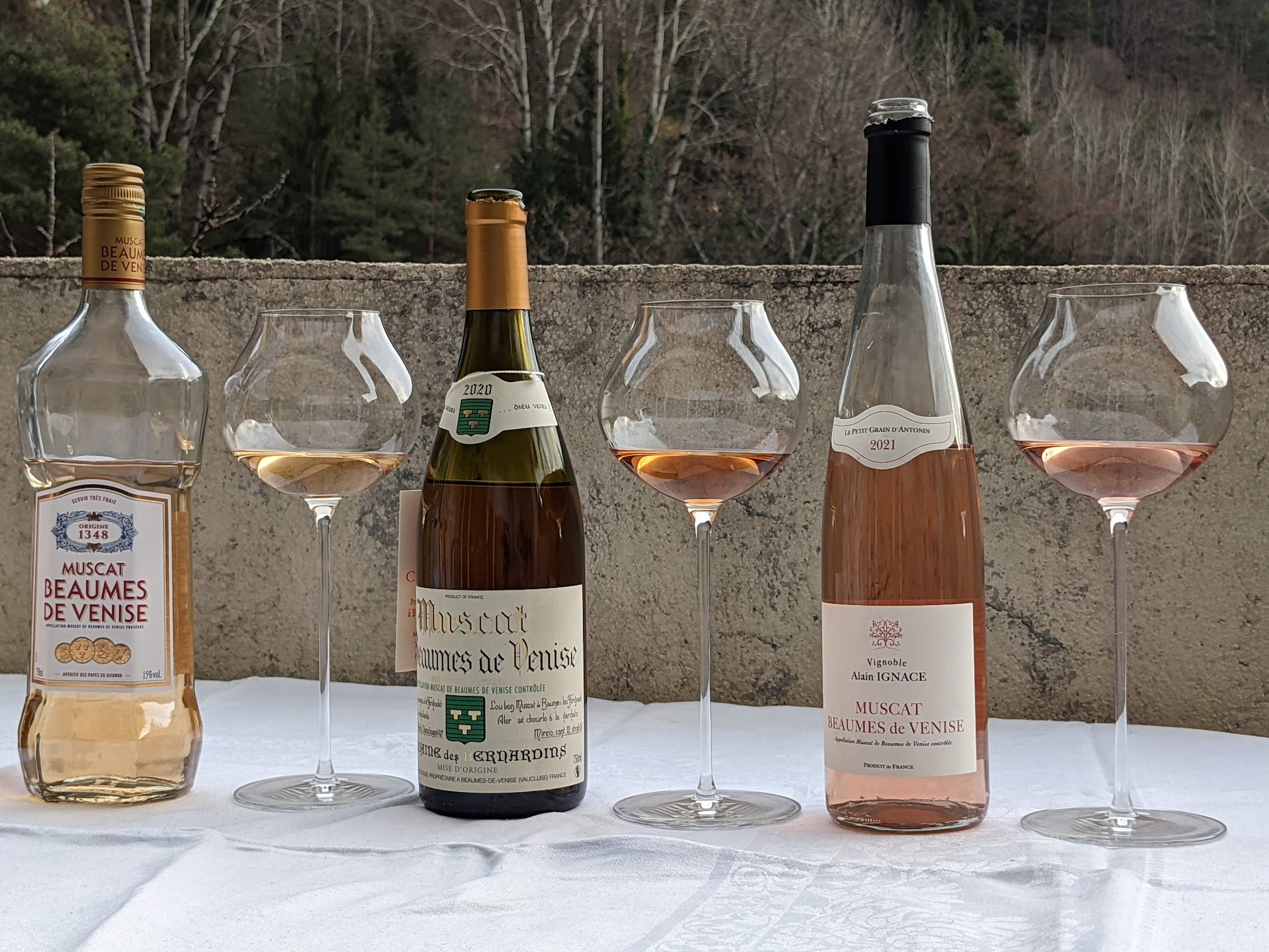
Origine 1348
Domaine des Bernardins 2020
Le Petit grain d'Antonin 2021, Alain Ignace
We will be looking into the rosés of Rasteau and Beaumes de Venise in greater depth in our forthcoming book The Rosés of Southern France due out in June 2022.
If you’re still not convinced by fortified pinks and only want a pink cocktail, don’t forget pink vermouth! Lustau of sherry fame make a particularly interesting one, which, similarly to the ports, we found worked best on its own rather than in cocktails - letting the herbals really shine.